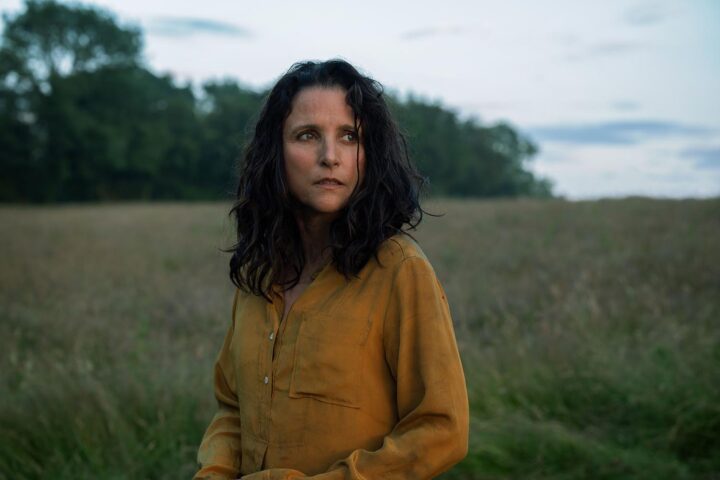Genre experimentation rarely feels as invigorating as it does in writer-director Chris Nash’s In a Violent Nature, which employs techniques from slow cinema to amplify the suspense of a slasher tale. Throughout, the camera methodically follows Johnny (Ry Barrett), a hulking undead killer who spends much of the film clad in a centuries-old firefighter mask, as he vengefully lurks and lumbers through the woods.
Be it the patience with which the kills and their lead-ups unfold or the naturalism of the bucolic setting’s sounds, every choice to depart from the expectations and conventions of horror allows Nash to better deliver on the expected output of chills and thrills. But what feels effortless on screen was by no means inevitable. Even taking into account the learning curve facing directors working on their first features, Nash had to deal with technical challenges that compromised his vision for a physically imposing yet psychologically inscrutable monster.
After production wrapped, he made the difficult decision to reshoot a majority of In a Violent Nature, knowing that meant he’d be doing so with less of a budget and fewer resources. That minimalism by necessity ended up blending seamlessly with the film’s hyper-focused perspective from the killer’s vantage point as he pursues those who awaken his corpse.
I spoke with Nash as In a Violent Nature prepared for a theatrical run ahead of a streaming debut on Shudder. Our conversation covered where he drew inspiration for cross-pollinating styles, how he remained confident in his aesthetic risk-taking, and when he felt confident in breaking the rigorous rules of how Johnny appeared on screen.
In a Violent Nature was not the original title of the film. How did nature, both as our innate instinct and the undeveloped world around us, come to the forefront of conversations about the film?
The original title of the film was pretty simple: Sleeping Animal. I wanted to treat the slasher as if it was in hibernation, an animal, part of nature, existing in his surroundings. So the role nature played was always very important for us. Originally, our concept of Johnny was that he was a reverse golem. Where the original golem tale is somebody building a tool of revenge out of the earth, we were thinking, “What if this one is the earth itself building a tool of revenge out of man?” Any naturalistic elements, and even just the decision to not use a traditional score for the film and just let nature speak throughout all the scenes, were all very conscious choices.
You’ve described doubting the decision of not scoring the film when seeing the assembly cut. What guided your instincts on when to hold to your vision, and was that harder given some of the challenges with the production reshoots?
When we had to reshoot it, when you’re in that position, you feel like, “Oh, everything that I originally envisioned is wrong. There’s a reason movies have scores. There’s a reason why people shoot in widescreen instead of Academy ratio. There’s a reason why you have your characters speaking on screen instead of in the distance off screen.” All these things…there’s a very clear reason for! And you’re afraid, at that point in time, when you’re like, “Will any of these experimental risks I was going to do work?” But you just have to embrace the potential of failure, I think. If it works or if it doesn’t, I’ll never know, unless I actually stick to these rules.
How did you balance the rigorous aesthetic of seeing the film from Johnny’s POV while also giving yourself the freedom to diverge when it when it made sense?
We felt that as long as we stuck to the rules as much as we could, then we could give ourselves permission to break them. It made everything become a negotiation. One of the rules we had was we wanted Johnny to be in every shot of the film, even if a shot ultimately ends with him not in the frame anymore. As long as he was there at the start of the shot, then that was good, but there always had to be a piece of him [there], whether it’s his foot, his hand, or [something else]. Clearly, the film has some scenes where Johnny’s not in the frame, and it became a discussion of, “Okay, how do we justify this?” As long as we could justify it within a storytelling structure, then we would go for it. But yeah, the rules were very important.
The name of your producer, Peter Kuplowsky, carries a lot of weight for film festival fans who recognize him from programming TIFF’s Midnight Madness. What were some of the contributions he made to the ideas and philosophy of the film, as you alluded to in your director’s statement?
Peter, as well as Shannon Hanmer, the other producer of the film, are very creative. I’ve known Peter and Shannon for 15 to 20 years, they’re like my best friends, and so having them as producers is great because they know what they’re doing, but there’s also a shorthand and a freedom in how we speak with each other. I trust their ideas. So whenever we did have to make a concession, as far as a shot that I had or an idea that I had to approach things, I knew I could trust that they weren’t just being money-saving producers. Any idea or suggestion they had was very much in the service of getting the film done and doing it justice. Shannon also works within the film festival circuit. She programs with Toronto After Dark and also used to assist with Midnight Madness programming, as well for Colin Geddes, who Peter took over for. We’re all very well exposed to film. We watch a lot of movies every year, and we all have the same taste.
How did you go about intellectualizing the horror genre and archetypes without making that commentary a part of the text?
I think it’s one of these things that if you do the work and think about what it is, it’s going to come across in the work regardless of whether or not you’re standing on a soapbox and shouting it. The more you make yourself aware of and educate yourself, the more that it’s going to show itself in what you produce, regardless of whether or not you’re being forceful.
Were there other examples of unconventional stylistic hybrids that you looked at, less for the film but more for knowing that such cross-pollination could work?
That’s a hard question because I think a lot of the stuff I tend to admire is much more transgressive. But whether or not it’s such a straightforward cross-pollination, I don’t know for sure whether it is. One of my favorite films is Conor McPherson’s The Eclipse, which is a very affecting ghost story but also a romance tale and a satire. It balances all these things seamlessly and masterfully, but I don’t know whether that aspect of it influenced me at all. I think music definitely is one of the things that influences me more, as far as cross-pollination goes. I think musical artists are at a point where there’s a lot more freedom in making a hip-hop/country song that actually works. It’s something that I’m hoping we see more of in film.
You’ve talked a lot about the visual influences on the film. Were there any sonic inspirations you were looking at?
I mean, just being outside! It’s one of these things when we’re location scouting, it’s like, “Oh, this is perfect!” There are some films where the sound design itself really stood out to me, whether it’s artificial or whether it’s more organic. Panos Cosmatos’s work, and the sound design for everything that he does, is just great and really seeps in. One that always stood out to me was Croupier. I don’t know what it is about Croupier specifically, and I should really look into who that sound designer was, but the sound design was phenomenal for me.
Since 2001, we've brought you uncompromising, candid takes on the world of film, music, television, video games, theater, and more. Independently owned and operated publications like Slant have been hit hard in recent years, but we’re committed to keeping our content free and accessible—meaning no paywalls or fees.
If you like what we do, please consider subscribing to our Patreon or making a donation.




